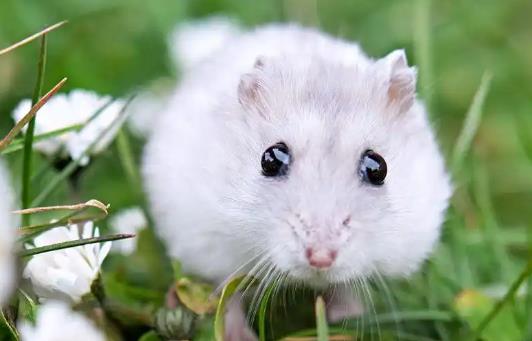The lifespan of a hamster is generally around 2 to 3 years, but this can be affected by various factors.
I. Breed Differences
Dwarf Hamsters: Dwarf hamster breeds such as the Winter White Dwarf Hamster and the Campbell's Dwarf Hamster typically have a lifespan of 2 to 2.5 years. For example, the Winter White Dwarf Hamster is a relatively common pet hamster breed. Under normal feeding conditions, most of them live within this lifespan range. This is because dwarf hamsters have a smaller body size, relatively weaker physical functions, and a faster metabolism rate, so their overall lifespan is relatively shorter.

Syrian Hamsters (Golden Hamsters): Syrian hamsters are larger in size, and their lifespan generally can reach 2.5 to 3 years. Their larger body size gives them certain advantages in physiological functions. The reserve capacity of their body organs is relatively strong, and they can withstand more physiological stress, so their lifespan is slightly longer than that of dwarf hamsters.
II. Factors of the Breeding Environment
Living Space: If the hamster's cage is too small, the hamster may experience stress due to insufficient activity space. Being in a depressed state for a long time will affect its health and thus shorten its lifespan. For instance, a Syrian hamster requires a cage that is at least 30×30×30 centimeters in size. This can ensure that it has enough space to move around, play, and rest.
Temperature and Humidity: Hamsters are suitable to live in an environment with a temperature ranging from 18 to 26 degrees Celsius and a relative humidity of 40% to 60%. Either too high or too low a temperature can cause harm to hamsters. For example, when the temperature exceeds 30 degrees Celsius, hamsters may suffer from heatstroke; when the temperature is lower than 10 degrees Celsius, hamsters may enter a state of hibernation, which is a challenge to their physical functions. Repeated occurrences of such situations will shorten their lifespan. Inappropriate humidity can also trigger health problems such as respiratory diseases, which will affect the lifespan of hamsters.
Hygiene Conditions: The hamster cage needs to be cleaned regularly, including changing the bedding, washing the food bowl and water bottle, etc. If not cleaned in a timely manner, hamsters living in a dirty environment are very likely to breed bacteria and parasites, leading to various diseases such as skin diseases and gastrointestinal diseases. These diseases will greatly shorten the lifespan of hamsters.
III. Dietary Factors
Balanced Nutrition: A hamster's diet should include high-quality hamster food, an appropriate amount of fresh vegetables and fruits, and clean drinking water. If a single type of food is fed for a long time, such as only giving grains to hamsters, it will lead to an unbalanced diet and problems such as a lack of vitamins and minerals. For example, a lack of vitamin C can cause hamsters to get scurvy, with symptoms such as gum bleeding and joint swelling, affecting their health and lifespan.
Food Quality: The food provided for hamsters must be fresh and clean. Spoiled food contains harmful bacteria, molds, etc. Once hamsters consume it, they will suffer from diseases such as food poisoning, which endanger their lives. For example, moldy grains contain aflatoxins, which are potent carcinogens and can cause serious damage to organs such as the liver of hamsters.
IV. Health and Genetic Factors
During the breeding process, if the hamster's parents have genetic defects themselves, the probability of their offspring having health problems will increase, and their lifespan may also be affected. For example, some hereditary heart diseases or immune system deficiencies may make hamsters more prone to illness, resulting in a shortened lifespan.
The hamster's own health condition is also very important. If a hamster can maintain a good health condition during its growth process and does not suffer from serious diseases, then it is more likely to reach its normal lifespan. Taking the hamster to see a veterinarian regularly for health checks can help detect and deal with potential health problems in a timely manner, which is conducive to extending the lifespan of the hamster.
